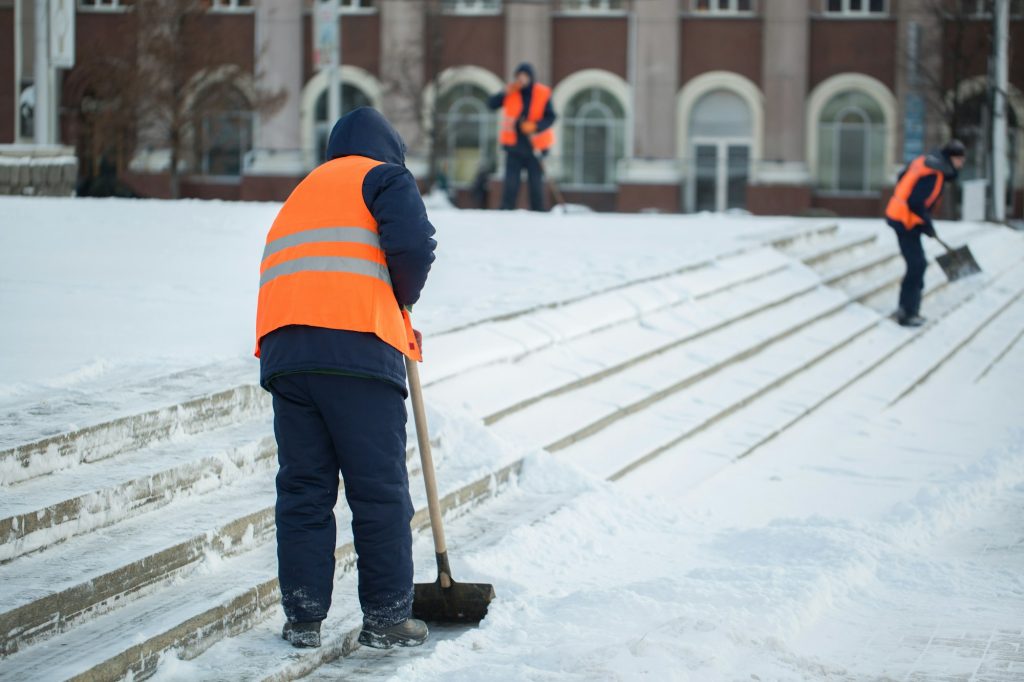Winter transforms landscapes with a beautiful blanket of snow, but it also poses snow management challenges for homeowners and businesses. Effective techniques, from traditional to innovative, are essential for clearing driveways, sidewalks, and other critical areas to ensure a safe and hassle-free winter season.
Traditional Techniques
- Shoveling: Shoveling is the most common and cost-effective method of snow removal, especially in places like Draper. It’s ideal for smaller areas and light snowfall. To make the task easier, choose a shovel with an ergonomic handle that reduces strain on your back. Always push the snow instead of lifting it when possible, and take frequent breaks to avoid overexertion.
- Snow Blowing: For larger areas or heavier snowfalls, a snow blower can be a lifesaver. These machines come in various sizes and capacities, from single-stage models for light use to more robust two-stage machines designed for deeper snow. When using a snow blower, ensure the area is clear of debris that could clog the machine, and always follow the manufacturer’s safety guidelines.
Modern Solutions
- Heated Driveways: Installing a heated driveway system is a modern convenience that melts snow on contact, eliminating the need for manual removal. While the initial installation can be costly, this method is incredibly effective for those living in areas with frequent heavy snowfall. Heated driveways work by using electric cables or hydronic tubing that heats the surface, preventing snow accumulation.
- Snow-Melting Mats: For those who prefer not to retrofit their entire driveway, snow-melting mats offer a portable alternative. These mats can be laid on walkways, steps, and small driveways and plugged into an electrical outlet. They provide targeted melting and are easy to store when not in use.
Choosing the Right Equipment
Selecting the appropriate removal equipment is crucial for efficiency and safety. Consider the size of the area you need to clear and the typical snowfall in your region. For small areas or occasional snow, a sturdy shovel may suffice. For larger spaces or frequent heavy snow, investing in a reliable snow blower is advisable. Additionally, modern solutions like heated driveways or snow-melting mats can be evaluated based on budget and specific needs.
Safety Precautions
Snow management can pose physical risks, especially in cold weather conditions. Here are some safety tips to consider:
- Warm Up: Before starting, perform light exercises to warm up your muscles, reducing the risk of strains or injuries.
- Dress Appropriately: Wear layered clothing, insulated gloves, and waterproof boots to maintain body warmth and mobility.
- Stay Hydrated: Despite the cold, snow is physically demanding. Drink plenty of water to stay hydrated.
- Use Proper Techniques: When shoveling, use your legs to lift, not your back, and push the snow instead of throwing it whenever possible.
- Be Mindful of Slips: After clearing snow, apply salt or a de-icing agent to prevent ice formation, minimizing slip hazards.
Maintaining Clear Pathways
To keep pathways clear throughout the winter, it’s essential to act promptly after snowfall. Regularly monitor weather forecasts to anticipate snow events and prepare your equipment in advance. Remove snow as soon as possible to prevent it from compacting and turning into ice, which is harder to remove. Additionally, consider applying a pre-treatment of salt or de-icer before a snowstorm to reduce ice buildup.
Conclusion
Effective snow management requires a combination of traditional techniques, modern solutions, and safety precautions. By choosing the right tools, following best practices, and maintaining vigilance throughout the winter season, you can ensure that your driveways and sidewalks remain safe and accessible, no matter how much snow falls.

